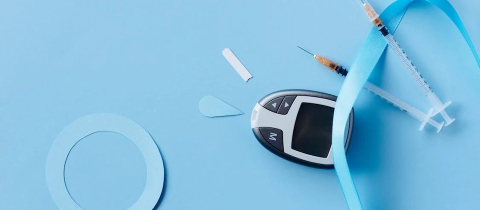This article was first published in The Skeptical Inquirer.
Uh-oh. You’re on a boat, plane, or rollercoaster. Or in your living room the morning after a party that was a bit too much fun. And the worst is happening. That creeping sense of dread, uneasiness in your stomach, accelerating heart rate, beads of sweat just appearing … You’re starting the steep slide down Nausea Lane that ends at Vomit Village. What do you do? Besides grabbing a precautionary receptacle, of course. Reach for Dramamine and resign yourself to the drowsiness it brings? Grab the bottle of Pepto-Bismol and try to hold your nose to avoid its chalky taste? What if, instead, you should be reaching for an alcohol swab?
As you probably already know, nausea is an extremely uncomfortable sensation. When surgical patients were queried, they ranked postoperative vomiting and nausea as two of the most undesirable side effects, and nausea after surgery was a stronger predictor of dissatisfaction than any other complication, including severe pain.
Antiemetic (anti-nausea) drugs can be given prophylactically or as rescue medications, although you’re likely more familiar with the latter. They are most commonly used to treat motion sickness, morning sickness, or the side effects of other medications such as anesthetics, chemotherapy agents, or opioids. But, of course, they also find function in treating nausea resulting from food poisoning, a bad hangover, or a stomach bug. There are a few different classes of antiemetics, in part because a few different neurotransmitters mediate the feeling of nausea. At home, you might take antihistamines such as dimenhydrinate (Dramamine/Gravol), an anticholinergic drug such as scopolamine (Scopoderm), or the brilliantly pink bismuth subsalicylate (Pepto-Bismol). In the hospital, doctors often favor drugs such as ondansetron or prochlorperazine. But an old nurse’s trick for treating nausea is smelling isopropyl alcohol.
In a survey of 231 certified registered nurse anesthetists in the United States, 92 percent had employed this trick to treat postoperative nausea or vomiting (PONV), even though only 3 percent had received any formal education on the technique. It’s certainly not a difficult method to employ—just wave a pad impregnated with isopropyl alcohol (aka isopropanol) under a patient’s nose. It’s cheap, fast, and uses materials that are almost always on hand. It’s the kind of technique that can be harnessed even while waiting for a doctor to approve a different antiemetic medication or while waiting for them to start working. It’s got next to no basis for harm—at worst, it just won’t work—and, importantly, it can help a patient just by giving them something to do. But even with its low risk, are we just wasting time and alcohol employing this old trick? In other words, does it actually work?
There have been a surprising number of studies on this phenomenon, which essentially boils down to a form of aromatherapy. Some compare sniffing isopropanol with a saline or water placebo, others with different aromatherapy scents such as peppermint or lavender, and others with conventional antiemetics. A 2018 Cochrane review included sixteen controlled clinical trials, a 2021 nursing PhD thesis included ten, and a 2022 systematic review included thirteen. While all evaluated the available evidence slightly differently, they all came to roughly the same conclusion: when compared to placebo, or standard antiemetic treatments, there is some evidence that smelling isopropyl alcohol can help treat nausea and vomiting.
Compared to standard antiemetics, isopropyl alcohol seems to work faster. Patients reported a significant decrease in the time it took for a 50 percent reduction in nausea. In a similar vein, patients who inhaled isopropanol were less likely to require a rescue antiemetic.
What inhaled isopropanol did not do was reduce the intensity of nausea overall or the number of people still considered nauseated at the end of treatment. So basically, while it might work a bit faster, inhaling isopropanol doesn’t necessarily work better than traditional antiemetics.
Although it seems to be effective, it is not clear by what mechanism this trick works. As a relatively short sniff is employed, clinically relevant amounts of isopropanol are unlikely to enter the body systems. Given the subjective nature of nausea, the brief distraction of a novel smell may be doing the trick. Another popular theory is that the controlled deep breathing necessary to smell something is the real mitigator of nausea. Even if the isopropanol is incidental, given how readily available and cheap it is, it seems like a good tool to help patients slow and deepen their breathing.
Since almost all of the studies were done on surgical patients experiencing PONV, it’s unclear whether the conclusions apply to other causes of nausea. Similarly, since only one study seemed to involve children, it’s possible that this technique wouldn’t work as well on them. Another thing isopropanol can’t do is prevent nausea. Unlike popping a Gravol as soon as you get on the plane, sniffing isopropanol ahead of expected nausea does not work.
If you want to employ this trick yourself, you’ll want to stock up on either a bottle of isopropyl alcohol (a.k.a. rubbing alcohol) or some individually sealed isopropanol pads for easier use on the go. For best results, you should probably stick to isopropanol as opposed to ethanol. While also commonly sold for wound cleaning purposes, ethanol has a less intense odor, so it may not work as well. In a pinch, you could try smelling some isopropanol-based hand sanitizer. Or, well, just take a few deep, slow breaths. If it fails, you’ll at least have some rubbing alcohol on hand to help clean up the vomit.







